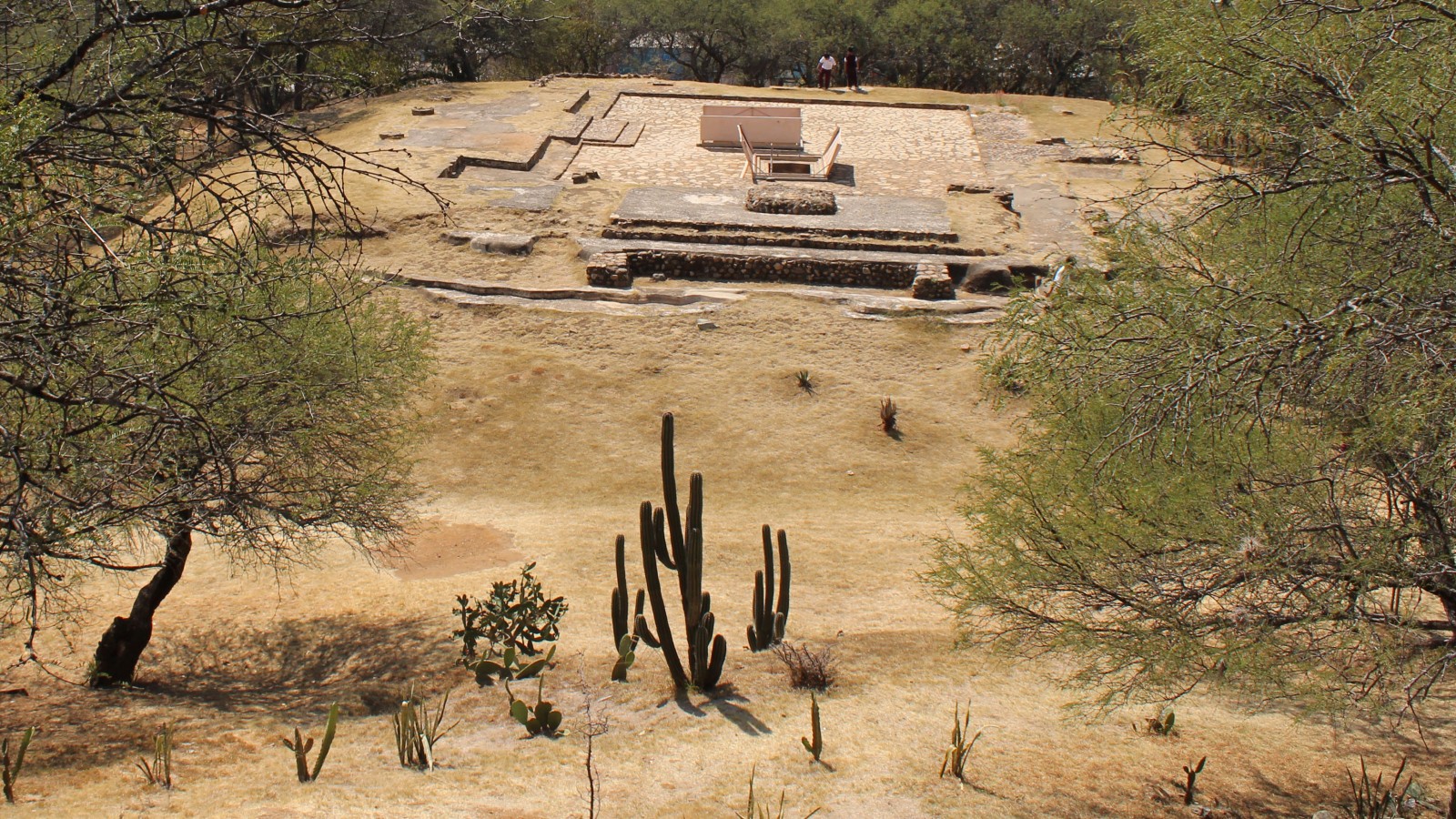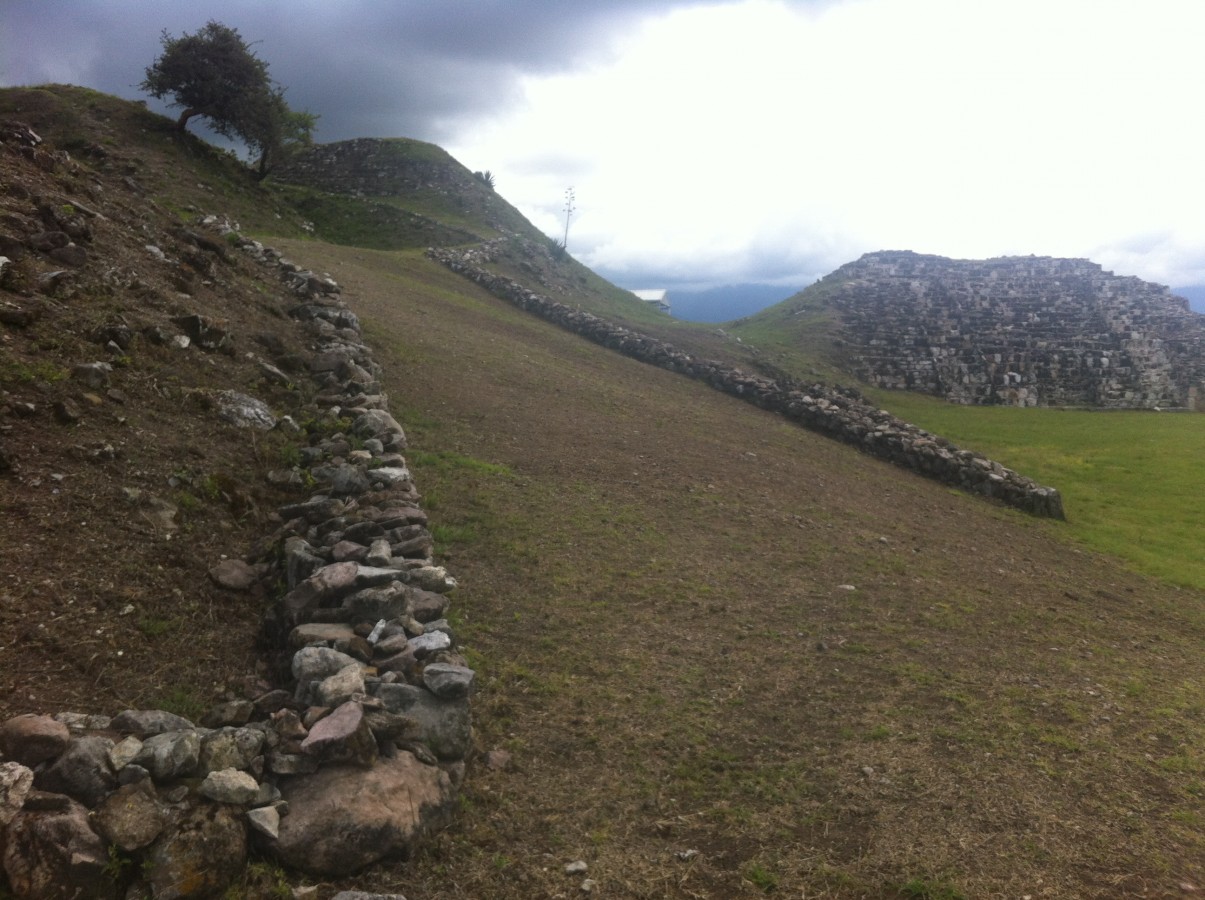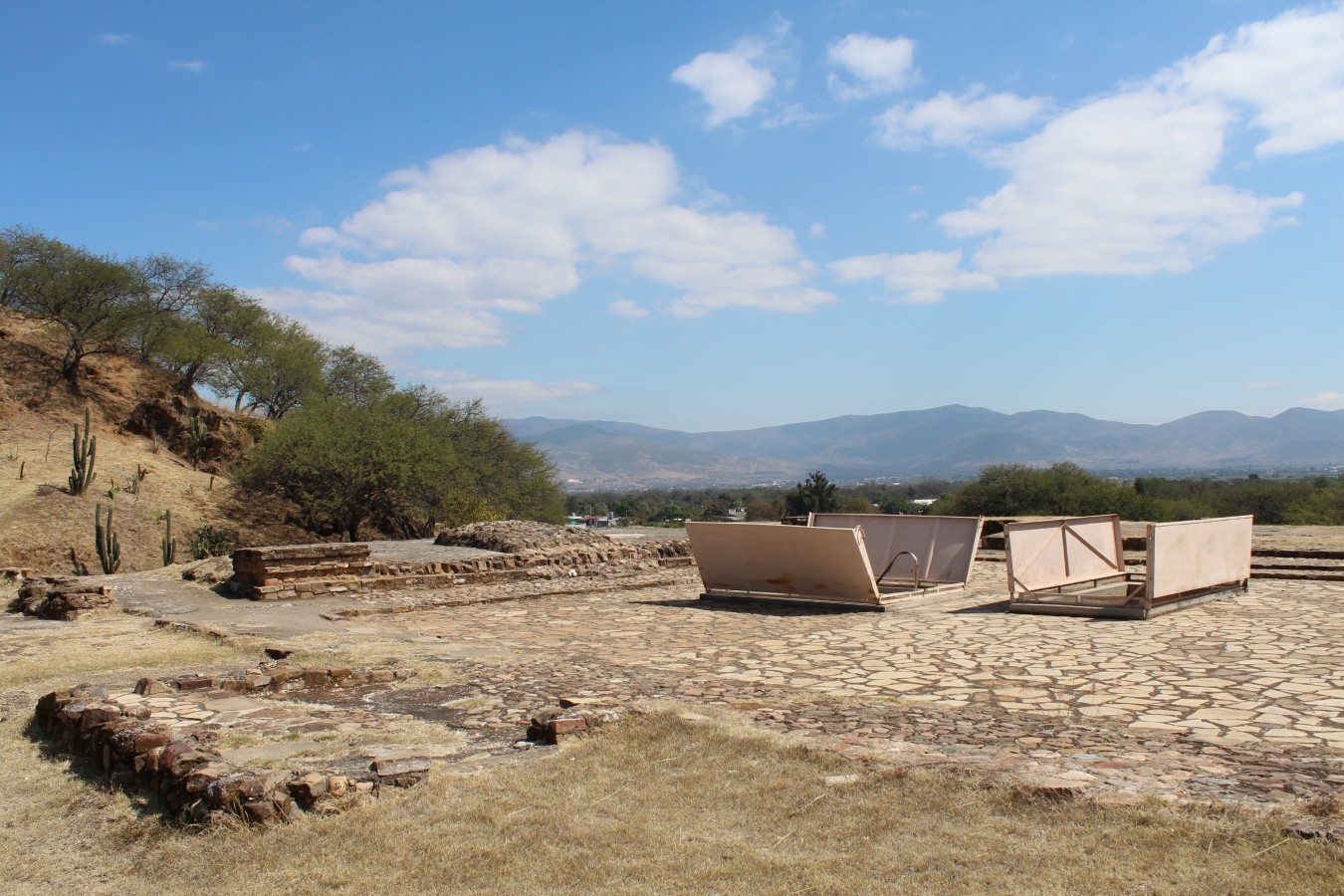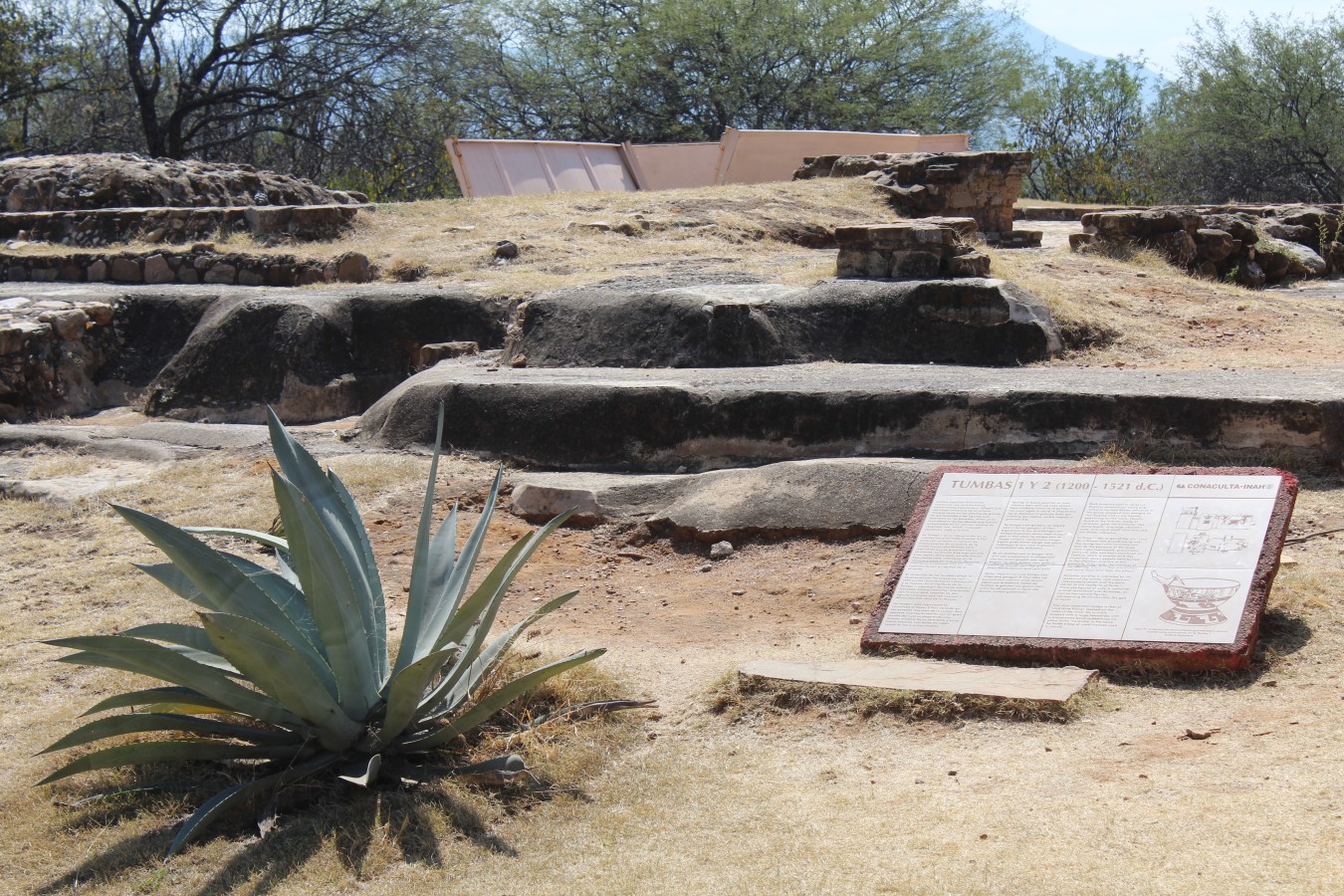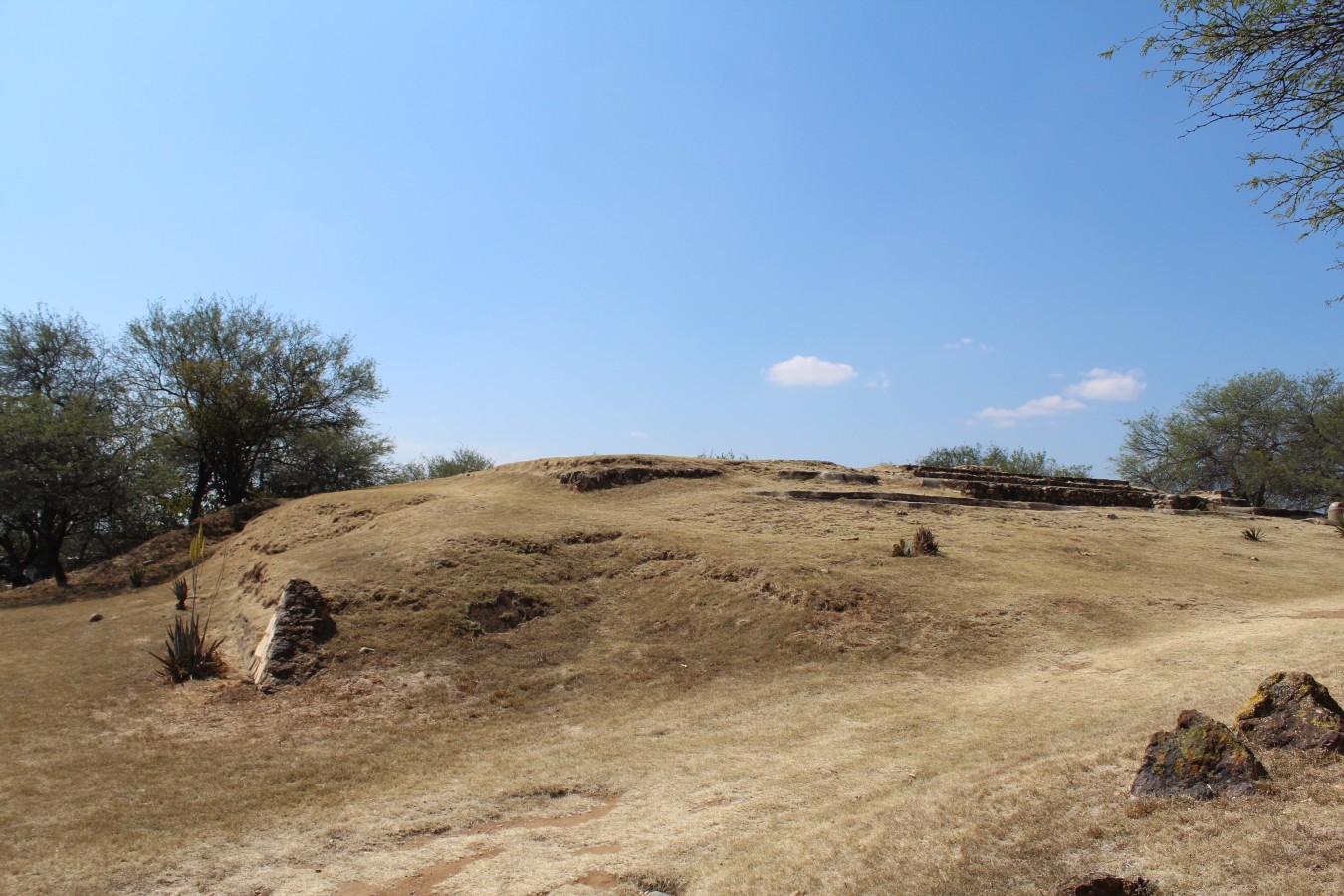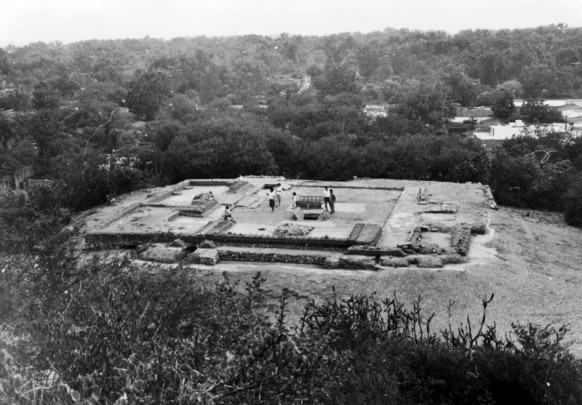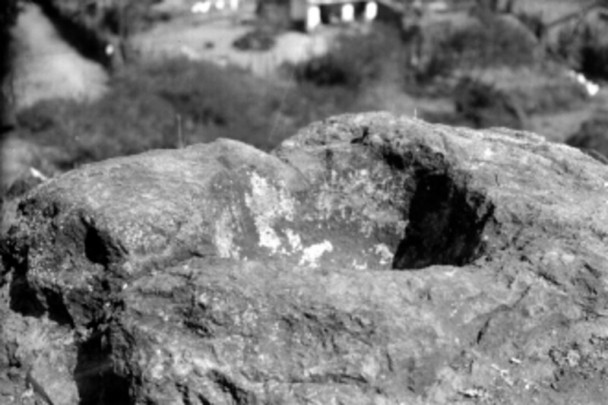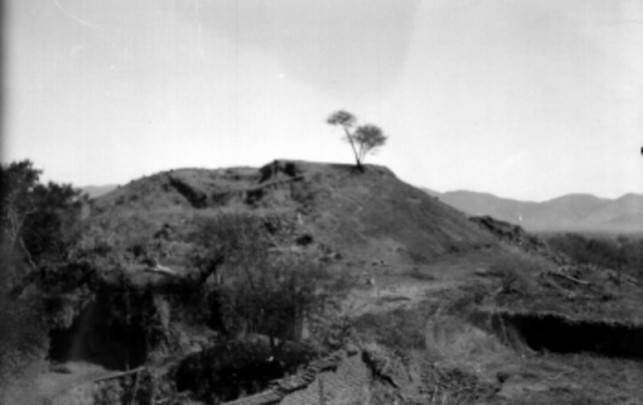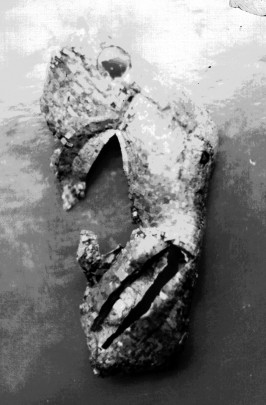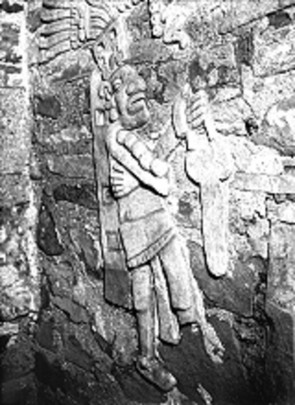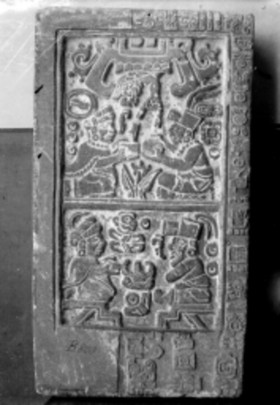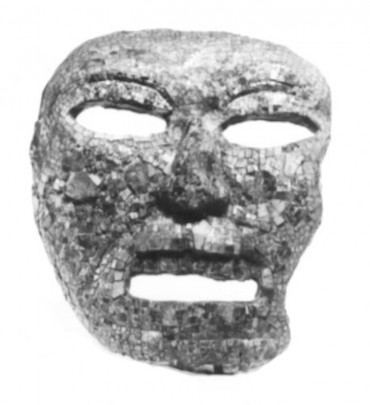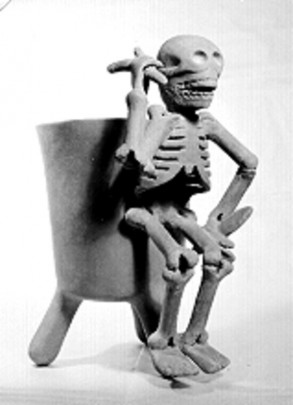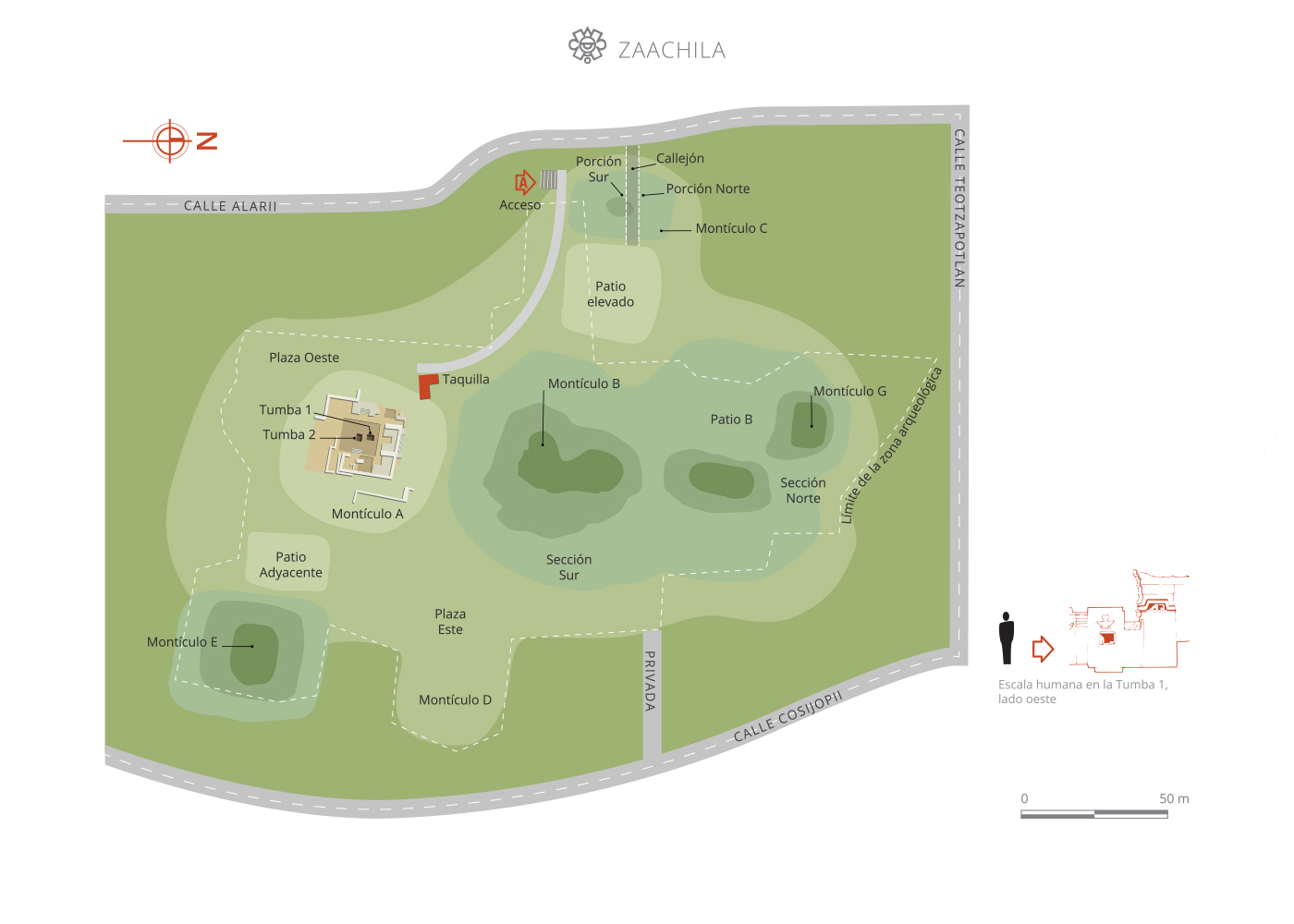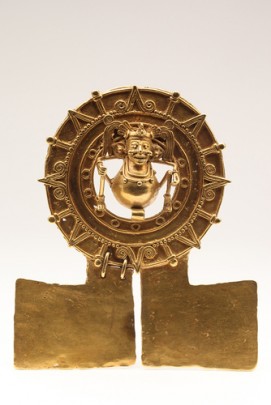Zaachila
God of the Zapotecs
A Zapotec-Mixtec city still lived in when the Spanish arrived and governed by king Cosijoeza. It is known for its architecture and the tombs discovered here including one with a rich offering of gems and objects made from gold and precious metals.
About the site
Zaachila belonged to the Zapotec culture and had 3,500 years of history. Around the Early Preclassic (1500-900 BC) it was a village with maize cultivation and a pottery tradition, where the inhabitants lived in houses made from sticks covered in clay. It was on the west side of the rocky island which is occupied today by El Cerrito, the principal archeological site. The area had a smaller population during the Middle Preclassic (900-100 BC) and the population fell around the end of this period (500-300 BC), possibly because its people moved and participated in the founding of Monte Alban. In the Early Classic (350-500) it was already a community with a mound and an estimated population of 315 people. Around the Late Classic (500-850) it was a great city-state, reaching an area of nearly 1,000 acres. In the Early Postclassic (850-1200), after the collapse of Monte Albán, Zaachila had a relatively large population while other centers were shrinking. In the Late Postclassic (1200-1521) it was a political center with a prominent lineage and a religious center alongside Mitla. Three of the tombs excavated are among the finest in Oaxaca. Finds include gold gems, carved bones, masks, turquoise disks and polychrome pottery. Around the mid-twelfth century there were royal alliances between the Zapotecs and Mixtecs. A daughter of the ruling family of Teozapotlan married a Mixtec noble from Almoloyas and from that date Mixtecs lived in Cuilapan.
1500 a. C. - 1521
Preclásico a Posclásico
1200 - 1521
Preclásico Temprano a Posclásico tardío
Map
Did you know...
- Zaachila had a Preclassic village contemporary with San José Mogote.
- It had a relatively large population in the Postclassic while Monte Albán was depopulated.
- Three of the most important Postclassic tombs in Oaxaca were found here.
- Tomb 1 has stucco sculptures representing the characters buried in it.
- It was explored in 1962 by Roberto Gallegos Ruíz.
Practical information
Tuesday to Saturday from 09:00 to 16:00 hrs.
$75.00 pesos
Se localiza en el subvalle Zimatlán-Ocotlán, 12 km al suroeste del centro de la ciudad de Oaxaca.
From the city of Oaxaca, take Carretera Federal 131. The site is located 15 km from the city.
Services
-
+52 (951) 515 33 46, +52 (951) 515 04 00
-
This email address is being protected from spambots. You need JavaScript enabled to view it.
Directory
Asistente de Asesor Educativo
Lázaro Agileo Antonio Félix
This email address is being protected from spambots. You need JavaScript enabled to view it.
+52 (951) 513 33 46

